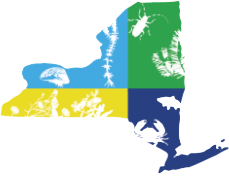The invasive spotted lanternfly (Lycorma delicatula) was detected last year in Pennsylvania, but entomologists are already warning farmers and growers as far away as California to be prepared for its arrival. In fact, they have published an article in the Journal of Integrated Pest Management which offers information on how to identify and manage it.
This colorful, inch-long insect can be enormously destructive to crops, timber, and ornamental plants. Among the 40 plant species counted as its hosts are grapes, peaches, apples, dogwood, maples, walnut, oak, and pines.
Native to northern China, the spotted lanternfly has spread to Korea and Japan, where it has caused considerable damage. Last year authorities in Berks County, Pennsylvania quarantined five townships and issued an alert document to help people identify the pest.
“I don’t want to scare people,” said Dr. Surendra Dara, one of the co-authors, “but it has the potential to spread, and we do not have a biological-control agent.”
Dr. Dara’s paper provides a detailed description of both nymphs and adults. It also describes feeding methods, including the fact that older nymphs and adults often feed in groups, one of the clues to their identity. Adults and nymphs pierce the phloem and suck out soft tissue with their mouthparts. Heavy feeding causes wounds that ooze on tree trunks. The honeydew then accumulates around the base of the trees and serves as a medium for sooty mold, which can injure or kill the tree.
For now, the spotted lanternfly remains confined to a small area of Pennsylvania, but according to Dr. Dara, all appropriate interests should stand by, keep watch, and — especially — be ready.
The full article, “Lycorma delicatula (Hemiptera: Fulgoridae): A New Invasive Pest in the United States,” is available for free at http://dx.doi.org/10.1093/jipm/pmv021.
The Journal of Integrated Pest Management is published by the Entomological Society of America, the largest organization in the world serving the professional and scientific needs of entomologists and people in related disciplines. Founded in 1889, ESA today has nearly 7,000 members affiliated with educational institutions, health agencies, private industry, and government. Members are researchers, teachers, extension service personnel, administrators, marketing representatives, research technicians, consultants, students, and hobbyists. For more information, visit http://www.entsoc.org.

Credit: Entomological Society of America

